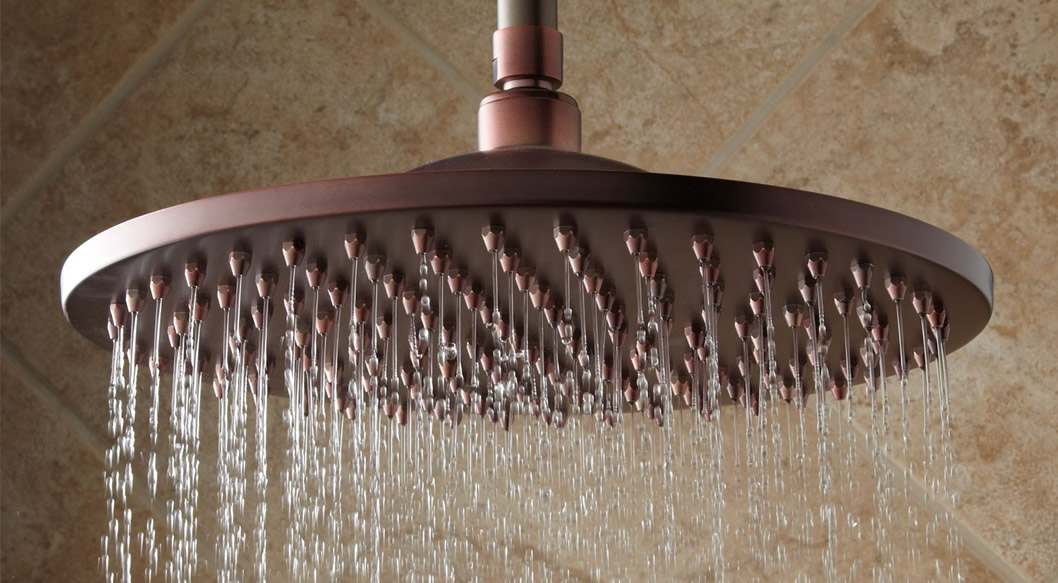The ancillary costs associated with owning a home can be prohibitive, especially if you live on Long Island. Monthly electricity, cable, gas and oil bills can add up to nearly as much as your mortgage payment. Finding ways to reduce these expenses can be challenging. One simple way to cut your water and electric bill is to install a Thermostatic Shower System.
What Does Thermostatic Mean?
A thermostat is a device that automatically responds to temperature changes and activates switches controlling the equipment. Thermostatic temperature control systems consist of a thermostat plus some sort of heater and/or cooler – in this case, water. The thermostat is a thermally triggered switch that changes between the “on” and “off” state at a specific temperature and is usually adjustable. They have set points – the temperature at which the switch is activated. In their simplest form, the heater “effector” is on, whenever the temperature of the water is below the set point. If the thermostat is equipped with an effector for cooling, it is on whenever the water temperature is above the set point.
What is a Thermostatic Shower Valve?
Thermostatic shower valves regulate the temperature of the water within one half of a degree of the desired temperature. This means that you don’t have to keep adjusting the hot and cold water valve when you are taking a bath or shower. The thermostatic valve does all of the work for you. A thermostatic control valve prevents dangerously high output temperature regardless of input and outlet variations and demand variations. A 3/4″ thermostatic single-handled valve is the most common thermostatic valve that is usually installed in a custom shower.
The thermostatic shower valve is a convenient way to achieve the desired water temperature without constantly having to fidget with the hot and cold water valves. But, the valve wasn’t created for convenience. It was designed for safety. Everyone has experienced the sudden change in water temperature that occurs when you are in the shower and someone flushes a toilet or starts a load of laundry. These abrupt shifts water consumption can lead to scalding from overly hot water.
With a thermostatic shower valve, if there is a failure in the cold water supply for any reason, the sensor will effectively shut down the flow of hot water to prevent scalding. If a failure occurs in the hot water supply, the sensor will effectively shut down the flow of cold water to prevent thermal shock. Any spike in temperature, whether hot or cold, will be addressed almost instantly.
A thermostatic shower valve also has commercial applications. Businesses like hotels or bed and breakfasts can benefit tremendously from regulating shower and faucet water temperatures. There is nothing like installing a thermostatic shower valve to prevent the flux in water temperatures that could potentially cause injuries in the shower.
Water and Energy Savings
Is there truly a noticeable savings from installing a thermostatic shower valve? It depends on a number of factors: how many showers are taken in your bathroom per week, how long the average person leaves the shower running without checking if the water is running hot, and what the flow rate of your shower is. Showers are typically one of the biggest draws on the hot water in your home. Heating that water accounts for up to 20 percent of total home electricity use.
Additionally, showering drives almost 17 percent of water use in homes. An average American family uses some 40 gallons of water per day in the shower. Research shows that approximately 20 percent of our shower time is lost due to factors such as waiting for the water to reach the desired temperature before entering the shower, shaving while in the shower and cleaning the tub/bathroom with the shower running. When using a standard shower head, every minute wasted equals 2.5 gallons of water that is literally going down the drain.
Installing a thermostatic shower valve can drastically reduce that water waste. The device lets cold water flow out when the shower is first turned on, but then tamps down on any more flow when water hotter than 95 degrees arrives. So when water stops flowing in the shower, you know hot water has arrived, and then you can get in and pull a cord to manually turn the flow back on. This means that you will be using less energy (as there is less hot water to heat) and you will be saving water (as the flow of water is significantly reduced). This dual savings is good news for your checkbook and the environment.
If you are interested in finding out more about a thermostatic shower valve, contact Reilly Plumbing at (516)242-7825 to speak to one of our customer service representatives.

